Swedish Yellow Pea Soup
This centuries-old Nordic comfort food has been warming Scandinavian bellies every Thursday since medieval times (yes, specifically Thursdays!). With its rich, smoky depth and hearty texture, it’s the kind of dish that makes you wonder why you haven’t been making it your whole life.
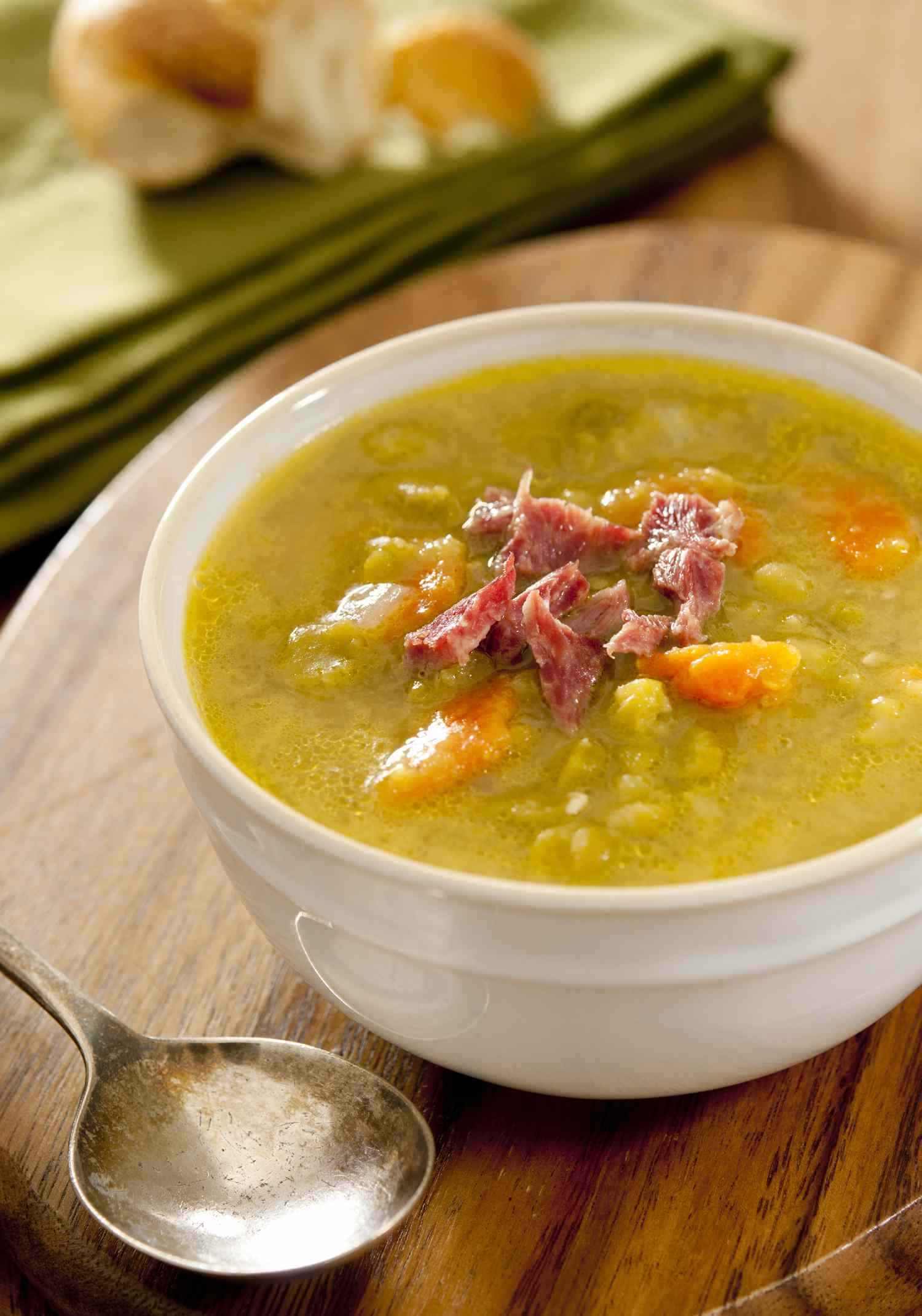
The magic of this soup lies in its beautiful simplicity. As the yellow peas slowly break down, they create a naturally creamy texture that carries the savory ham flavor into every spoonful. The traditional touch of brown mustard stirred in at serving adds a surprising tang that cuts through the richness perfectly. And while it might take a couple of hours to make, most of that time is hands-off simmering—giving you the perfect excuse to fill your home with irresistible aromas while you curl up with a good book.
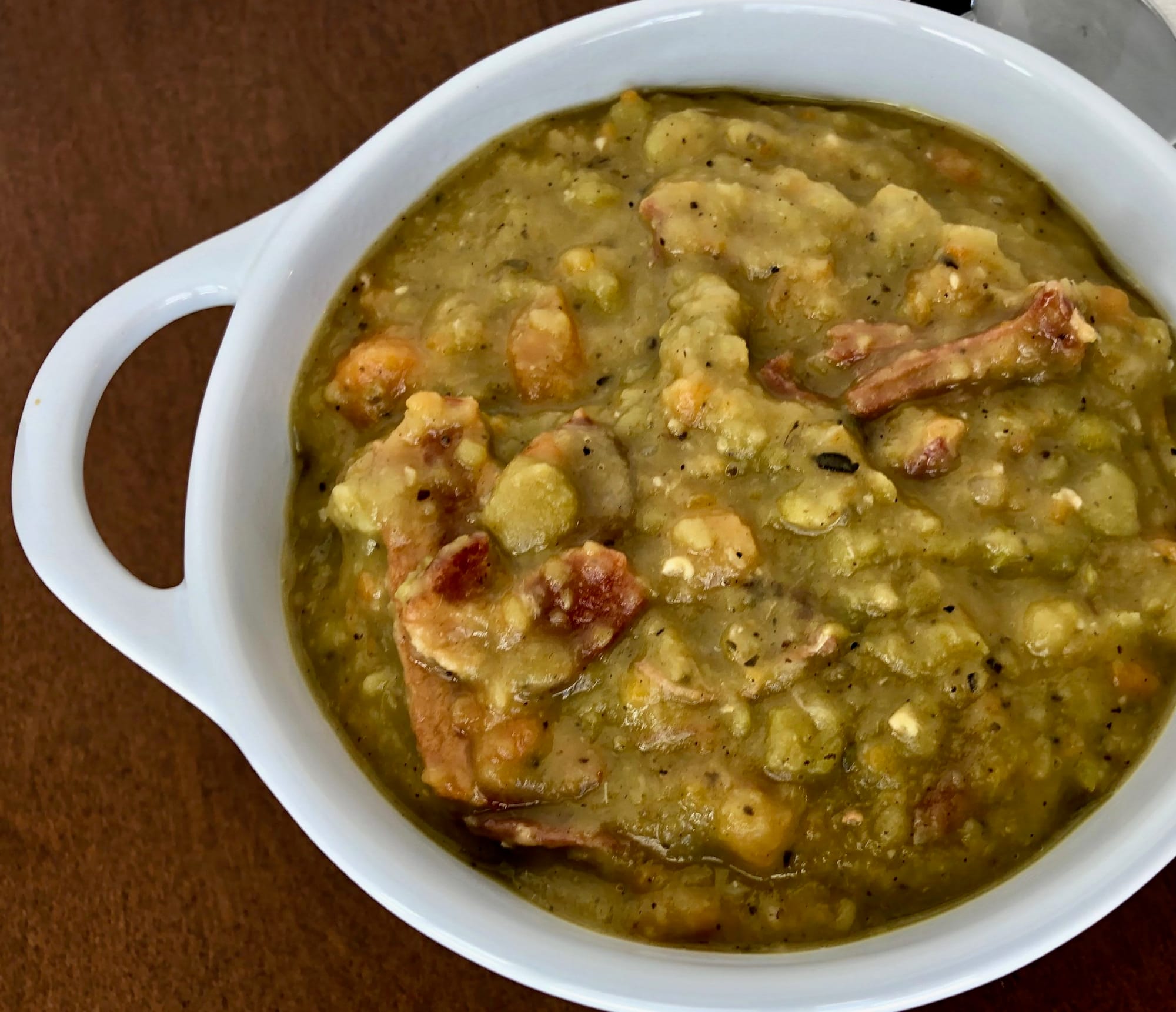
Ingredients
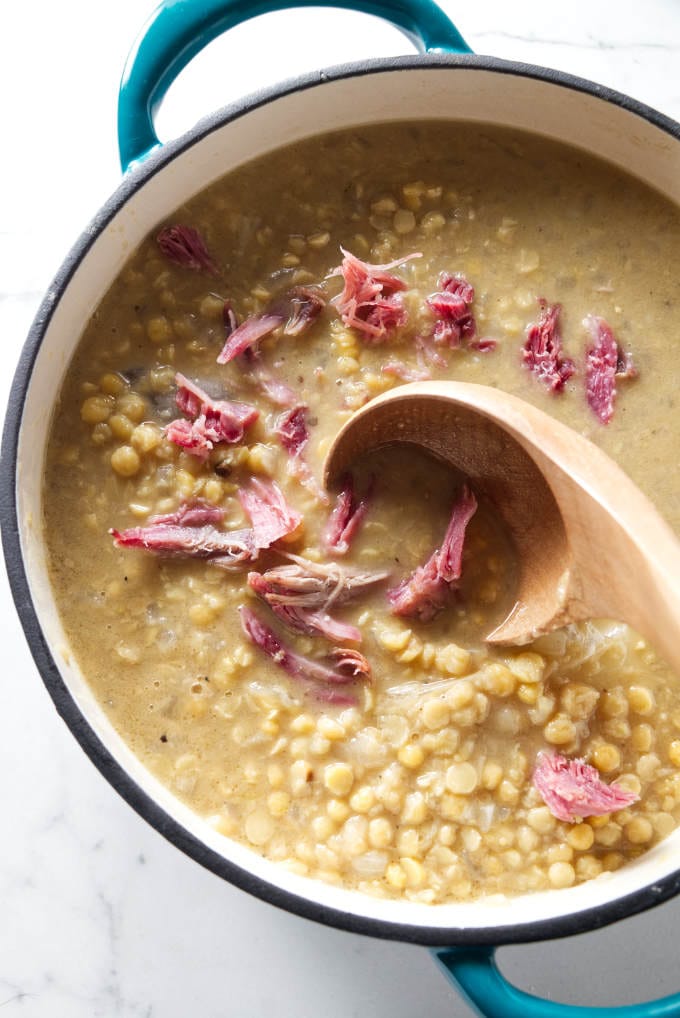
- 1 pound dried yellow or green peas, whole if possible, split work well too
- 8 cups water
- 2 onions, finely chopped (2 cups)
- 1 whole onion, peeled and studded with 2 cloves
- 1 large carrot, chopped (1/2 cup)
- 1 meaty ham bone, or 2 to 3 ham hocks
- 1 teaspoon dried thyme
- 1 teaspoon ground ginger
- 1 teaspoon salt
- 1/8 teaspoon pepper
- 1 teaspoon grainy brown mustard, for serving
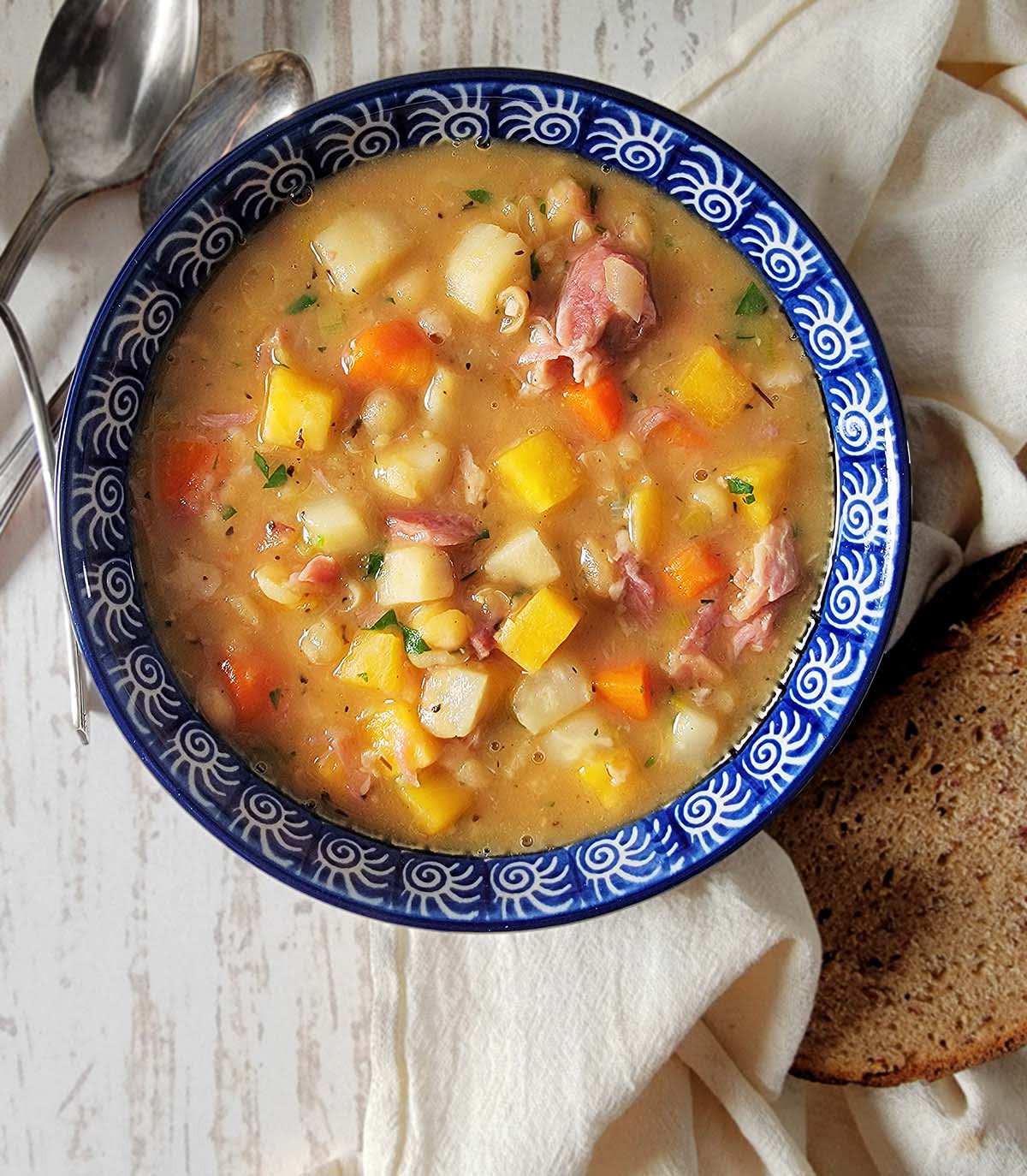
Steps
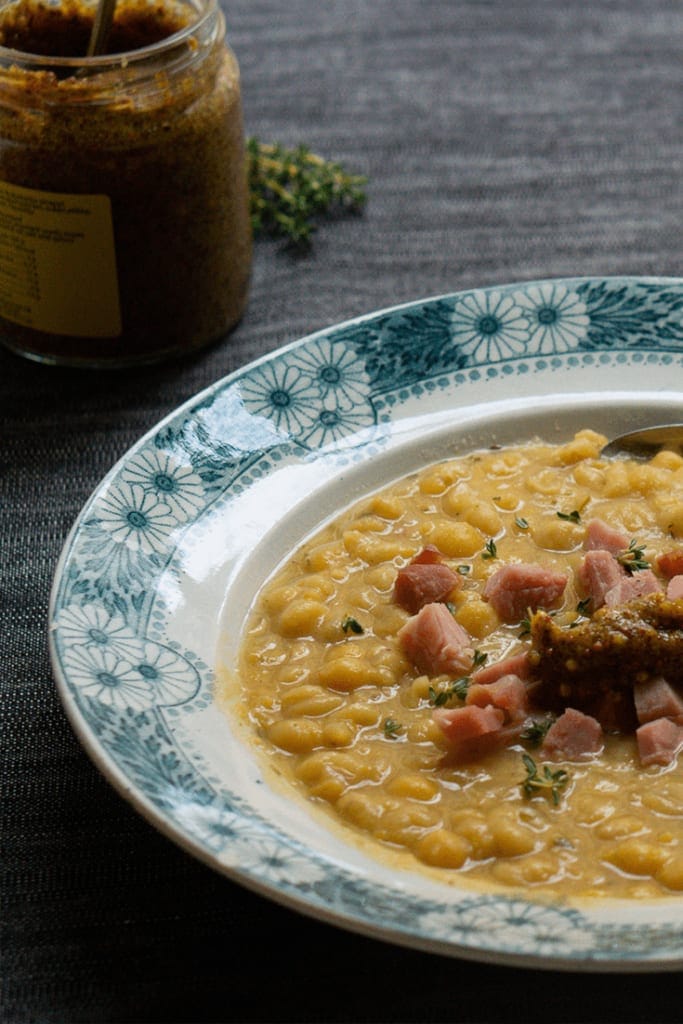
- Rinse and pick through 1 pound of dried yellow or green peas, removing any stones or debris. If using whole peas, soak them overnight in cold water that covers them by about 2 inches. This pre-soaking step is crucial for whole peas as it significantly reduces cooking time and helps them cook evenly.
- In a large, heavy-bottomed pot (at least 6-quart capacity), add 8 cups of water for a standard soup consistency, or reduce to 6 cups if you prefer a thicker, more stew-like texture. The pot size matters here – too small and you risk boil-overs during the long simmer.
- Add the drained pre-soaked peas (or unsoaked split peas), 2 cups finely chopped onions, the whole onion studded with cloves (this traditional technique adds subtle spice without overwhelming the soup), 1/2 cup chopped carrot, and your ham bone or hocks. The bone provides both flavor and body to the soup as its collagen slowly dissolves.
- Bring the mixture to a full boil over medium-high heat, about 8-10 minutes. Watch carefully as it approaches boiling and use a large spoon to skim off any foam that rises to the surface. This removes impurities that could cloud your soup. Reduce heat to maintain a gentle simmer (look for small bubbles, not a rolling boil), cover with a lid, and let simmer for 90 minutes.
- After the initial simmering period, check the consistency. If using whole peas, use a slotted spoon to skim off any loose pea skins that have risen to the surface. Remove 2-3 cups of the soup and carefully transfer to a blender or food processor. Pulse until smooth, about 30 seconds, then return the puree to the pot. This creates the perfect texture – partially smooth but with some whole pieces remaining for interest. Be careful when blending hot liquids – never fill the blender more than halfway and hold the lid down with a kitchen towel.
- Continue simmering for at least 30 more minutes, though an additional hour won’t hurt and will only develop more flavor. During this time, the soup will thicken as more peas break down naturally. If it becomes too thick, add hot water 1/4 cup at a time until you reach your desired consistency.
- Approximately 30 minutes before you plan to serve, remove the clove-studded onion (discard it) and the meat. Place the meat on a cutting board and, once cool enough to handle (about 5 minutes), chop it into bite-sized pieces, discarding any bones, fat, or gristle. Return the chopped meat to the pot, distributing it evenly.
- Season the soup with 1 teaspoon dried thyme, 1 teaspoon ground ginger, 1 teaspoon salt, and 1/8 teaspoon pepper. The ginger is traditional and adds a subtle warmth rather than spiciness. Simmer for 15 more minutes to allow the flavors to meld. Taste and adjust seasonings if needed – the saltiness will depend on your ham.
- Ladle the hot soup into warmed bowls and serve immediately. Pass around a small dish of grainy brown mustard for each person to stir into their soup to taste – traditionally about 1/2 teaspoon per bowl. The mustard’s tangy bite perfectly complements the soup’s rich flavor and is an essential part of the authentic experience.
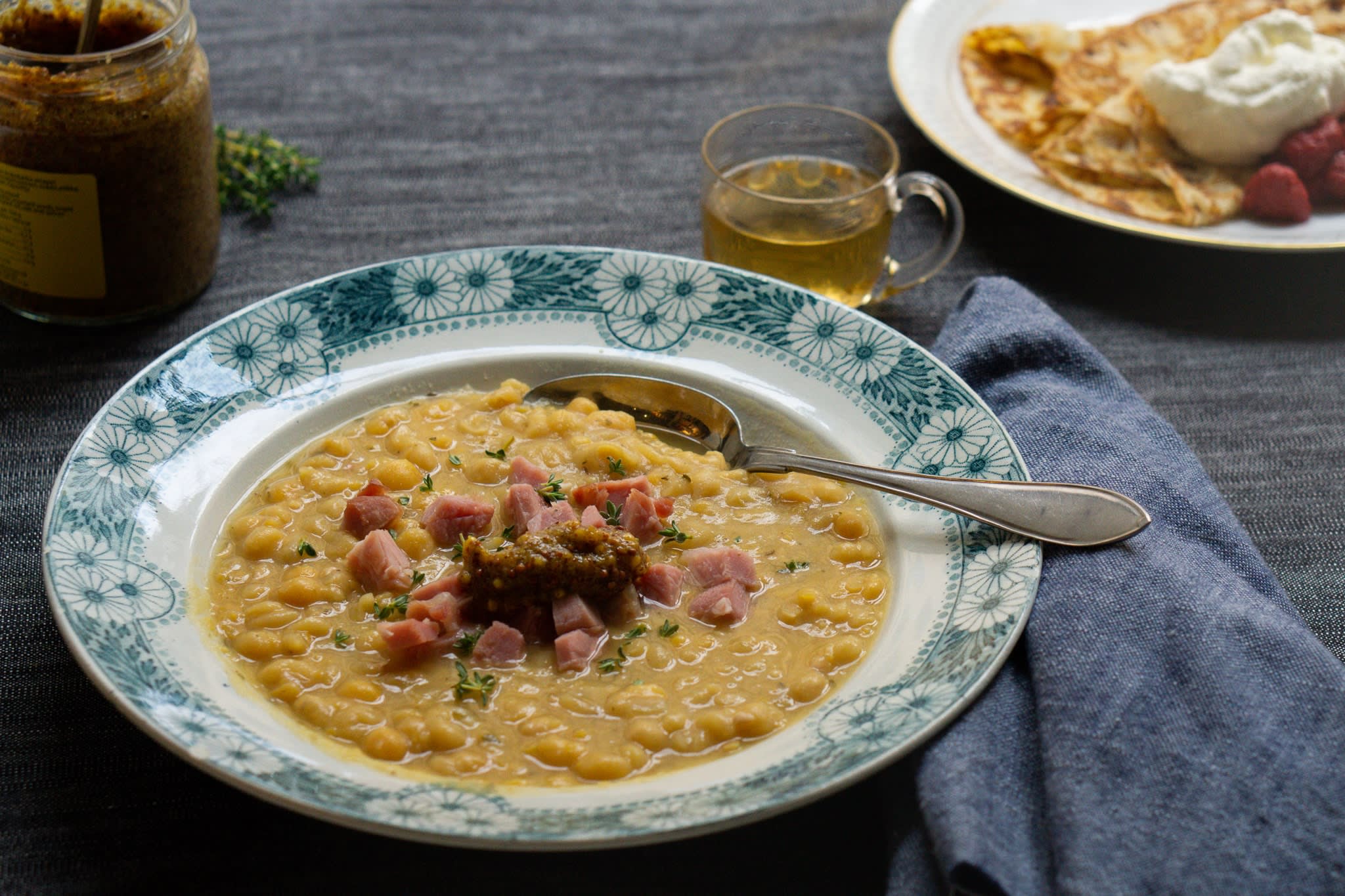
Smart Swaps
- Use smoked turkey leg instead of ham for a lighter option with similar smoky flavor
- Replace 1 teaspoon dried thyme with 1 tablespoon fresh thyme leaves for brighter flavor
- For vegetarian version, omit meat and add 2 tablespoons smoked paprika plus 1 tablespoon nutritional yeast for depth
Make It Diabetes-Friendly
- Split peas have a moderate glycemic index (32) compared to potatoes (78), making this already a good option
- Reduce serving size to 1 cup (approximately 25g carbs) and pair with a side salad dressed with 2 tablespoons olive oil to slow glucose absorption
- Adding 1 tablespoon apple cider vinegar to each serving can reduce glycemic response by approximately 20%
- If using split peas, don’t over-puree the soup – keeping some texture intact slows digestion and reduces blood sugar impact
Pro Tips
- For maximum flavor, make this soup a day ahead – the flavors deepen significantly overnight
- Yellow peas create the traditional color, but green split peas are more widely available and taste nearly identical
- The perfect consistency should be thick enough that a wooden spoon stands upright for a moment before slowly falling
- In Sweden, this soup is traditionally followed by thin pancakes with jam for dessert – try serving both for an authentic Nordic Thursday dinner